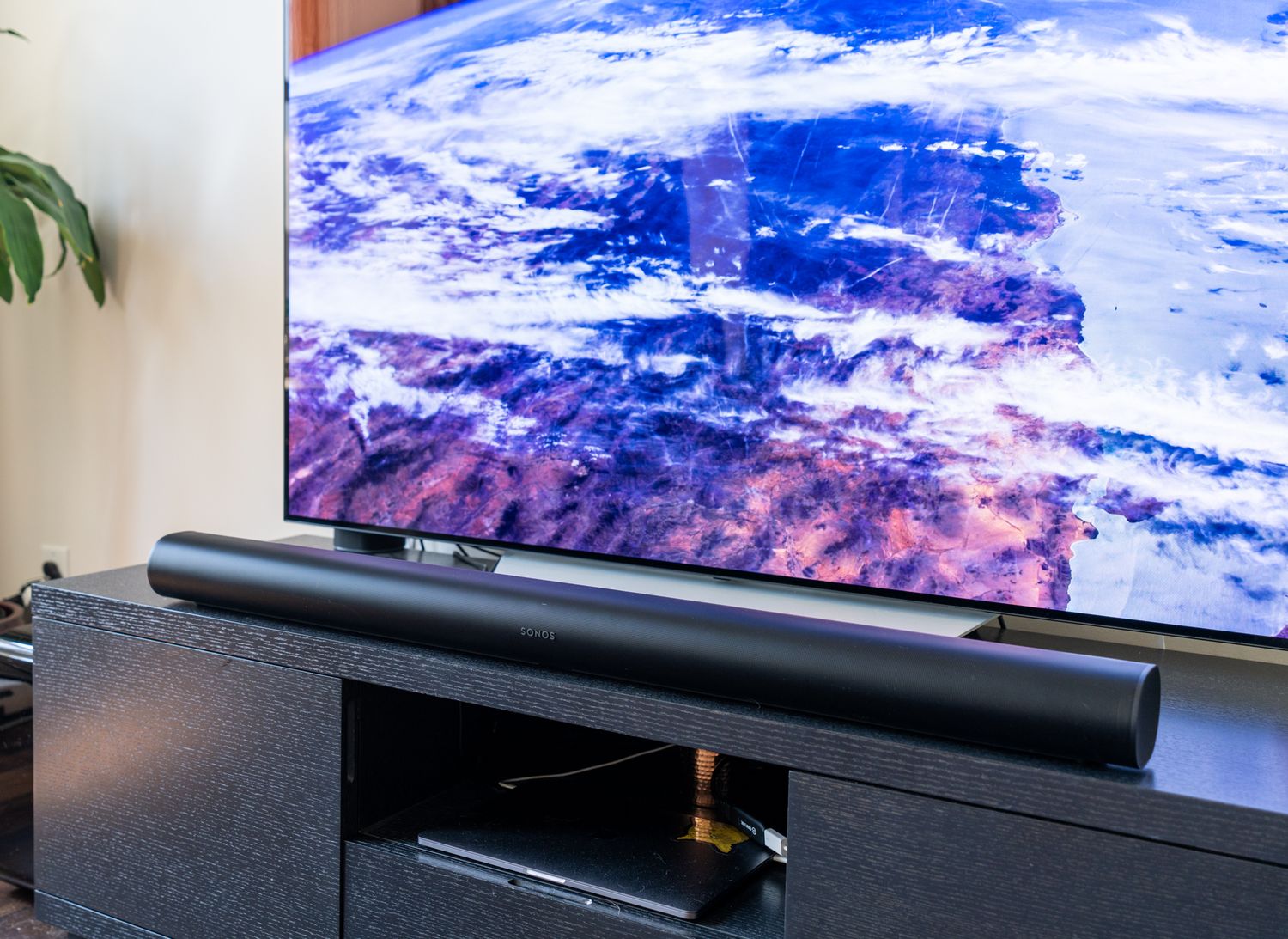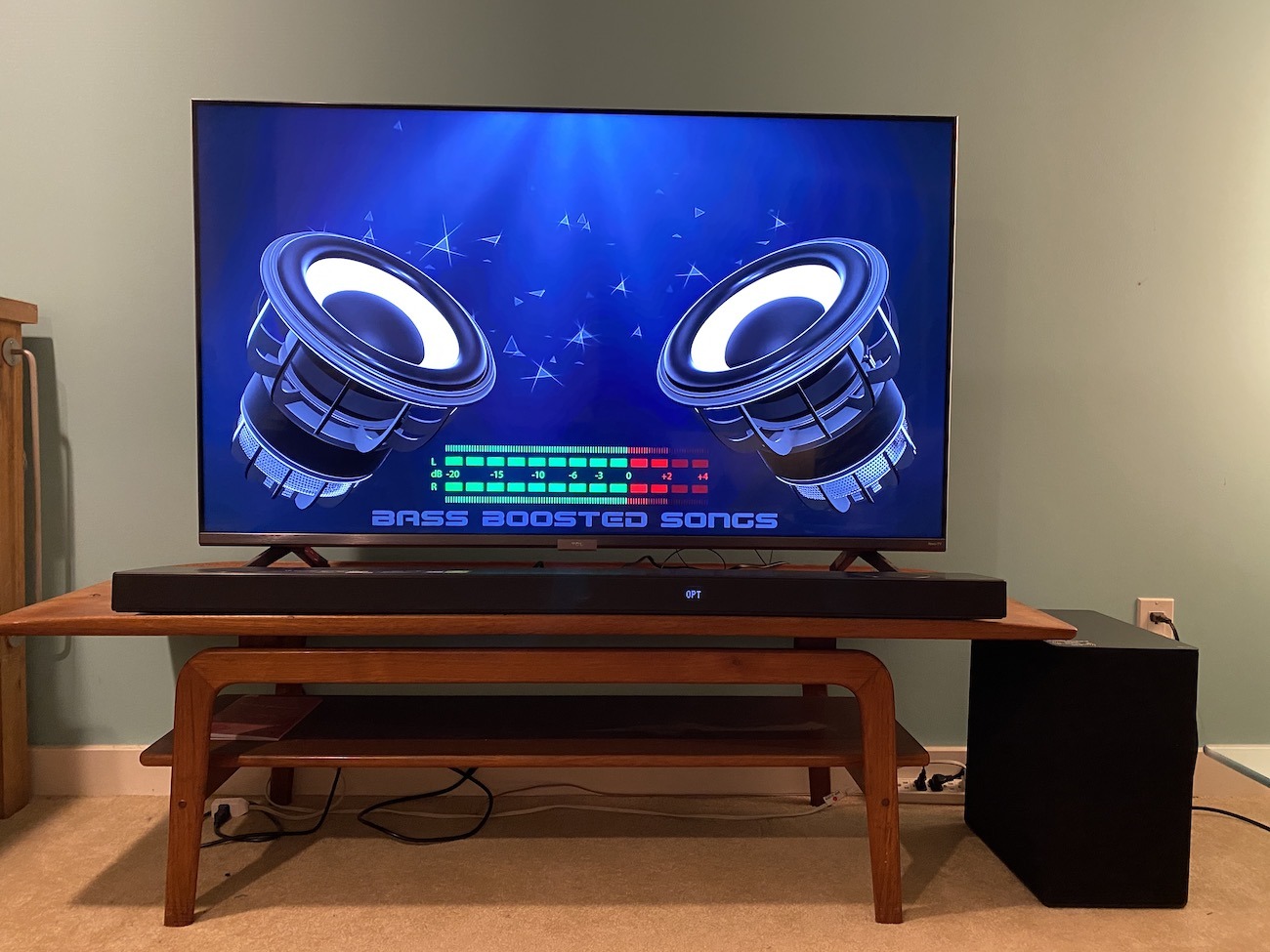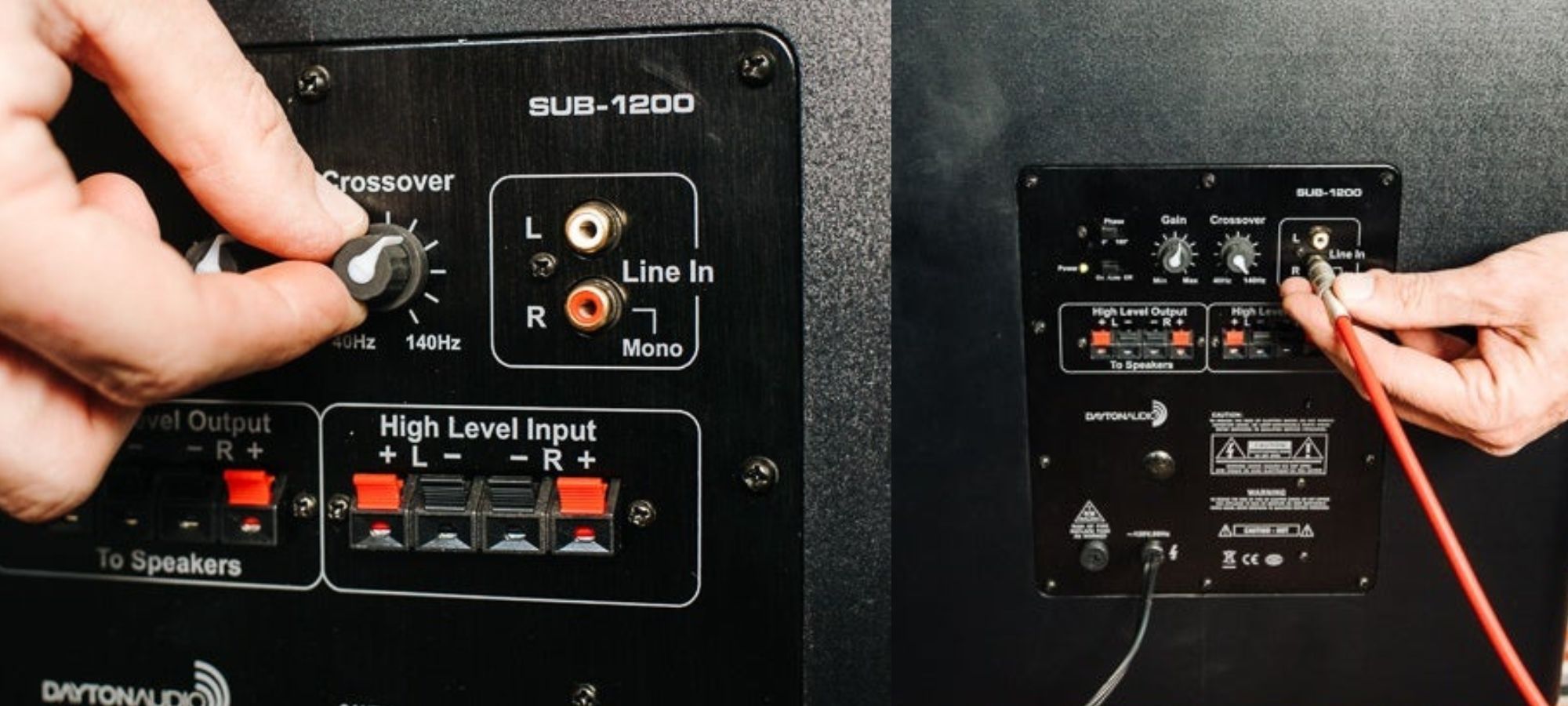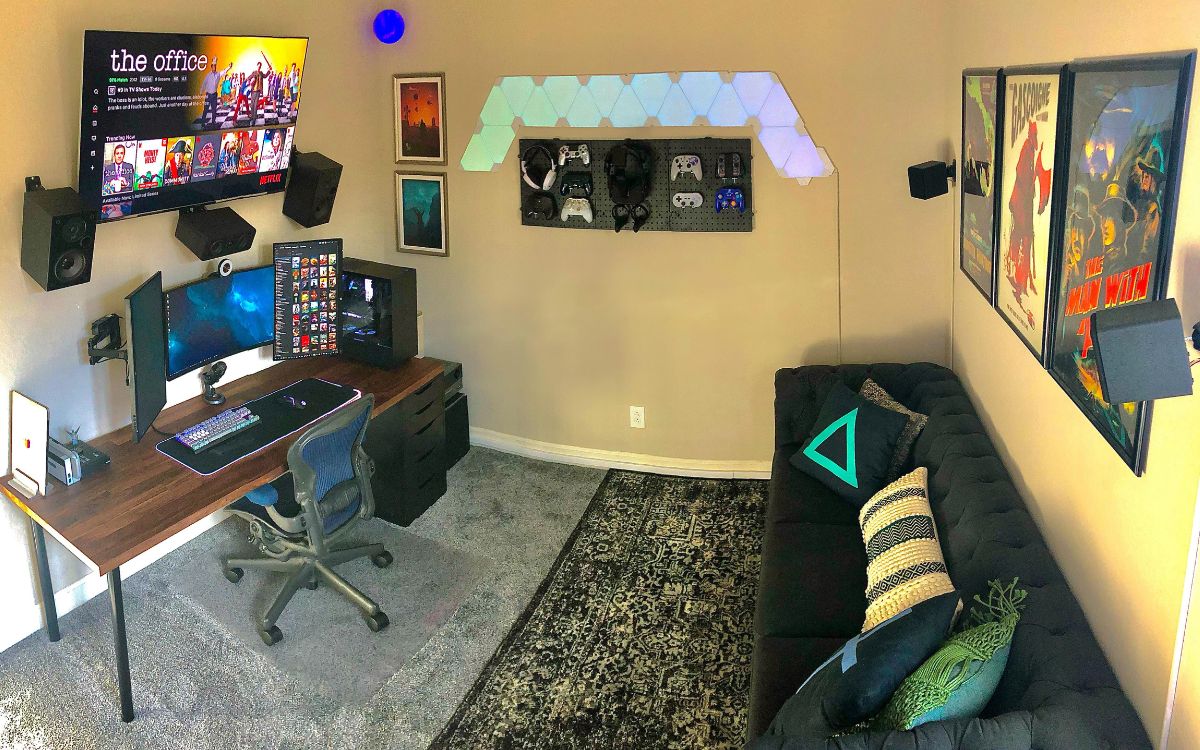Home>Production & Technology>Surround Sound>How To Set Up Sonos Surround Sound


Surround Sound
How To Set Up Sonos Surround Sound
Published: December 23, 2023
Learn how to set up Sonos surround sound in your home and create an immersive audio experience. Enhance your entertainment with our step-by-step guide.
(Many of the links in this article redirect to a specific reviewed product. Your purchase of these products through affiliate links helps to generate commission for AudioLover.com, at no extra cost. Learn more)
Table of Contents
Introduction
Welcome to the world of immersive audio with Sonos surround sound! Transform your home entertainment experience by creating a cinematic atmosphere right in your living room. Sonos, a leader in the audio industry, offers a range of cutting-edge speakers that can be seamlessly integrated to deliver a surround sound experience like no other.
Whether you’re a movie lover, a passionate gamer, or simply enjoy listening to music with enhanced depth and clarity, setting up a Sonos surround sound system will take your audio experience to new heights. With the ability to place speakers strategically around the room, you’ll feel fully immersed in the sound, creating a truly captivating multisensory experience.
Setting up a Sonos surround sound system may seem like a daunting task, but fear not! In this article, we’ll guide you through the process step by step, ensuring that you have all the knowledge and skills necessary to create your own immersive audio setup.
Before we dive into the details, it’s important to note that a Sonos surround sound system requires a few key components. These include a soundbar, which serves as the central hub, as well as additional speakers that will be placed around the room to create a surround effect. Make sure you have these components ready before proceeding with the setup.
Now, let’s get started on the exciting journey of setting up your Sonos surround sound system. By the end of this article, you’ll be on your way to enjoying a truly immersive and captivating audio experience in the comfort of your own home.
Step 1: Assess your space and needs
The first step in setting up your Sonos surround sound system is to assess your space and determine your specific audio needs. This will help you make informed decisions when choosing the right speakers and optimizing their placement for the best possible sound experience.
Start by considering the size of your room. Larger rooms may require more speakers to achieve optimal surround sound, while smaller rooms may only need a soundbar and a couple of satellite speakers. Take measurements of your room so you have a clear idea of its dimensions.
Next, think about the primary use of your surround sound system. Do you mainly watch movies and TV shows? Are you an avid gamer? Or do you want to create a high-quality audio setup for music playback? Understanding your primary needs will help you determine the type of speakers and audio configuration that are best suited for you.
Consider the layout of your room and any potential obstacles or challenges that may affect speaker placement. Take note of furniture, walls, and other objects that could impact the sound quality or obstruct the audio signal. Ideally, you want to place the speakers in positions that provide maximum coverage and eliminate any potential audio reflections or distortions.
Another important factor to consider is your budget. Sonos offers a range of speakers at different price points, so it’s crucial to determine how much you’re willing to invest in your surround sound system. Keep in mind that investing in high-quality speakers will significantly enhance your audio experience, but you don’t have to break the bank to achieve great sound.
Once you have assessed your space and determined your specific needs, you’ll be better equipped to choose the right Sonos speakers and plan their placement in the next steps of the setup process. Taking the time to evaluate these factors upfront will ensure that you create a surround sound system that is tailored to your space and provides an immersive audio experience that you’ll love.
Step 2: Choose the right Sonos speakers
Now that you have assessed your space and needs, it’s time to choose the right Sonos speakers for your surround sound system. Sonos offers a variety of speakers that are designed to work seamlessly together, providing a cohesive and immersive audio experience. Let’s explore the different options:
- Sonos Soundbar: The soundbar is the central component of your surround sound system. It is designed to sit below or above your TV and serves as the main audio source. Sonos offers different soundbars, such as the Sonos Beam or the Sonos Arc, each with its own unique features and capabilities. Consider factors like your budget, room size, and desired audio quality when choosing a soundbar.
- Sonos Sub: The Sonos Sub is a dedicated subwoofer that adds deep bass to your audio setup. If you enjoy a cinematic experience with powerful low-frequency effects, adding the Sub to your surround sound system can significantly enhance your overall audio quality.
- Sonos Satellite Speakers: Satellite speakers are designed to be placed around the room to create a true surround sound effect. Sonos offers various options, such as the Sonos One or the Sonos Five, that can be used as satellite speakers. Consider the size of your room and the number of speakers you need to achieve the desired surround sound experience.
- Sonos Amp: The Sonos Amp is a versatile amplifier that allows you to connect and power your existing speakers, turning them into Sonos-enabled speakers. If you already have high-quality speakers that you want to incorporate into your surround sound system, the Sonos Amp is a great option.
When choosing the right Sonos speakers, it’s important to consider compatibility and connectivity. Sonos speakers can be interconnected wirelessly using the Sonos app, creating a seamless multi-room audio system. Ensure that the speakers you choose are compatible with each other and can be easily integrated into your desired surround sound configuration.
Additionally, take into account the aesthetic appeal of the speakers. Sonos offers speakers in various colors and finishes, allowing you to choose a design that complements your home decor. This way, you can have both superior audio quality and a visually pleasing setup.
Take your time to research and compare the different Sonos speakers available to ensure that you choose the ones that best meet your specific needs and preferences. By selecting the right combination of speakers, you’ll be well on your way to creating a surround sound system that brings your audio content to life.
Step 3: Connect your Sonos speakers
After selecting the right Sonos speakers for your surround sound system, it’s time to connect them and create a seamless audio network. Sonos makes the setup process easy and straightforward through its intuitive app. Here’s how to connect your Sonos speakers:
- Download and install the Sonos app: The Sonos app is available for both iOS and Android devices. Download and install the app from the respective app store onto your smartphone or tablet.
- Create a Sonos account: Launch the Sonos app and create a new Sonos account. This account will serve as your central hub for managing and controlling your Sonos speakers.
- Set up your primary speaker: Follow the on-screen instructions in the Sonos app to set up your primary speaker. This will typically be the soundbar. Connect your primary speaker to your Wi-Fi network using the app’s guided setup process.
- Add additional speakers: Once your primary speaker is connected, you can add the additional Sonos speakers to your system. The app will guide you through the process of connecting each speaker to your Wi-Fi network and ensuring they are properly linked to the primary speaker.
- Create a surround sound group: In the Sonos app, you can create a surround sound group to designate the speakers that will function as your surround sound system. This will allow you to control the volume and audio settings for the group as a whole.
- Perform a system update: It’s important to ensure that your Sonos speakers have the latest firmware. In the Sonos app, go to “Settings” and check for any available software updates for your speakers. Install the updates if prompted.
Throughout the setup process, it’s important to follow the on-screen instructions provided by the Sonos app. This will ensure a smooth and trouble-free setup for your surround sound system. If you encounter any difficulties, Sonos provides extensive online resources, including troubleshooting guides and support articles, to help you resolve any issues.
Once your Sonos speakers are connected and the setup process is complete, you’ll have a fully functional surround sound system ready to deliver immersive audio for your entertainment pleasure. The Sonos app allows you to control and customize your audio settings, adjust volume levels, and even stream music from various online platforms, giving you complete control over your audio experience.
Now that your Sonos speakers are connected, it’s time to move on to the next step and configure your surround sound setup to ensure optimal performance and audio quality. Stay tuned!
Step 4: Configure the Sonos surround sound setup
With your Sonos speakers connected, it’s time to configure your surround sound setup and optimize it for the best possible audio performance. Follow these steps to ensure that you’re getting the most out of your Sonos surround sound system:
- Position your speakers: Start by positioning your speakers in the designated spots around the room. Refer to the user manuals or Sonos app for guidance on speaker placement. For example, the satellite speakers should be placed to the sides or behind your seating area for an immersive surround sound effect.
- Calibrate the soundbar: Use the Sonos app to calibrate your soundbar. This involves using the app’s built-in sound optimization feature to analyze your room’s acoustics and adjust the soundbar’s settings accordingly. This will ensure that the soundbar delivers the best possible audio quality based on your specific room environment.
- Adjust audio settings: Explore the audio settings within the Sonos app to fine-tune your surround sound experience. You can adjust settings such as bass, treble, and balance to create a sound profile that suits your preferences. Experiment with different settings until you find the optimal audio balance for your room and personal taste.
- Enable Trueplay: If available for your Sonos speakers, make use of the Trueplay feature. Trueplay uses the microphone on your mobile device to analyze the acoustics of your room and automatically adjust the audio settings for each speaker. This feature can further enhance the sound quality and optimize the surround sound experience.
- Create speaker groups: In the Sonos app, you have the flexibility to create different speaker groups. This can be useful if you want to have different audio zones in your home or if you want to separate the surround sound group from other speakers in your Sonos system. Customize the speaker groups to suit your specific needs.
Throughout the configuration process, it’s important to periodically test your Sonos surround sound system with different audio content, such as movies, TV shows, or music, to ensure that it’s performing as expected. Make any necessary adjustments to the settings or speaker placement based on your testing and listening experience.
By taking the time to properly configure your Sonos surround sound setup, you’ll be able to enjoy rich, immersive audio that enhances your entertainment experience. You’ll feel like you’re right in the middle of the action, whether you’re watching a thrilling movie or playing your favorite video game.
Now that you’ve configured your Sonos surround sound system, it’s time to move on to the final step and make any additional adjustments to the audio settings for a truly personalized experience. Keep reading to find out how.
Step 5: Adjust the audio settings
After configuring your Sonos surround sound setup, it’s time to fine-tune the audio settings to suit your personal preferences and ensure the best possible audio performance. Making these adjustments will help you create a truly immersive and customized audio experience. Here’s how:
- Test different audio modes: Most Sonos soundbars offer different audio modes, such as “Movie Mode” or “Music Mode.” These modes are designed to enhance specific types of content by optimizing the audio settings. Experiment with different modes to find the one that suits your listening preferences and the type of content you’re enjoying.
- Adjust the EQ settings: The Sonos app allows you to adjust the equalizer (EQ) settings for your speakers. The EQ settings control the balance of frequencies, such as bass, treble, and mids. If you prefer more bass-heavy audio or want to enhance the clarity of the vocals, play around with the EQ settings to achieve your desired sound profile.
- Enable Night Sound: If you live in an apartment or have close neighbors, consider enabling the Night Sound feature, available on certain Sonos soundbars. This feature reduces the intensity of loud sounds, such as explosions or gunshots, while enhancing softer sounds. It’s perfect for late-night movie sessions without disturbing others.
- Utilize speech enhancement: If you find it challenging to hear dialogue clearly, check if your Sonos soundbar has a speech enhancement feature. This feature boosts the vocal frequencies, making dialogue more prominent and easier to understand. Enable this setting for a better viewing experience, especially during dialogue-heavy scenes.
- Experiment with volume levels: Adjust the volume levels of your Sonos speakers to ensure a balanced and immersive audio experience. Pay attention to the relative volume between different speakers in your surround sound setup. You can use the Sonos app or your TV remote to control the volume levels and achieve the desired audio balance.
Remember, audio preferences vary from person to person, so take your time to experiment with different settings and find what works best for you. Trust your ears and make adjustments accordingly until you’re satisfied with the audio quality and surround sound experience.
Additionally, keep in mind that the audio settings may differ based on the content you’re consuming. For example, you may want different settings for movies, music, and gaming. Take advantage of the customization options within the Sonos app to create and save different audio profiles for each type of content.
By adjusting the audio settings to your liking, you can truly personalize your Sonos surround sound system and ensure that it delivers the immersive audio experience you’ve been craving. So go ahead, fine-tune those settings, sit back, and enjoy the incredible audio journey!
Step 6: Enjoy your Sonos surround sound system
Congratulations! After going through the setup process and making the necessary adjustments, you’re now ready to sit back, relax, and fully immerse yourself in the captivating audio experience provided by your Sonos surround sound system. Here are a few tips to enhance your enjoyment:
- Explore a variety of content: Take advantage of your newly configured Sonos surround sound setup by exploring a wide range of content. Watch your favorite movies and TV shows with rich, immersive sound. Play the latest video games and feel like you’re in the middle of the action. Listen to your favorite music and hear every instrument and note come to life.
- Host movie nights or gaming sessions: Share the joy of your Sonos surround sound system with family and friends. Host movie nights or gaming sessions where everyone can experience the full impact of immersive audio. Create unforgettable moments and enhance the entertainment value of social gatherings.
- Experiment with multi-room audio: If you have multiple Sonos speakers throughout your home, leverage the Sonos app’s multi-room audio feature. Sync your surround sound system with other Sonos speakers in different rooms to create a cohesive audio experience throughout your entire living space.
- Stay updated with software upgrades: Sonos continually releases software upgrades that enhance the performance and features of their products. Keep your Sonos app and speakers up to date by regularly checking for and installing the latest firmware updates. This ensures that you’re always benefiting from the latest improvements and optimizations.
- Seek additional support and resources: If you want to further explore the possibilities and capabilities of your Sonos surround sound system, Sonos provides a wealth of resources. Visit the Sonos website, browse through forums, and join online communities to connect with other Sonos users who can offer tips, tricks, and inspiration.
By following these steps and embracing the full potential of your Sonos surround sound system, you’re in for an extraordinary audio journey. Whether it’s the booming soundtracks of your favorite movies, the intricate melodies of your go-to songs, or the immersive soundscapes of your video games, your Sonos setup will make you feel like you’re right in the heart of the action.
So crank up the volume, get comfortable, and let your Sonos surround sound system transport you to a world where audio comes to life in all its glory. Enjoy the breathtaking sound experience that awaits you!
Conclusion
Setting up a Sonos surround sound system is a thrilling endeavor that elevates your audio experience to new heights. By following the steps outlined in this guide, you’ve learned how to assess your space, choose the right Sonos speakers, connect and configure them, adjust the audio settings, and ultimately enjoy the immersive audio experience that your surround sound system offers.
With Sonos, you have the flexibility to create a tailored surround sound setup that meets your specific needs and preferences. Whether you’re a movie enthusiast, a gamer, or a music lover, the Sonos speakers provide exceptional sound quality, bringing your content to life with depth, clarity, and realism.
Remember to take the time to properly position your speakers, calibrate the soundbar, and fine-tune the audio settings to achieve the optimal surround sound experience. Experiment with different presets and modes to find the audio profile that suits your personal taste and preferences.
As you enjoy your newly established Sonos surround sound system, don’t forget to explore a variety of content and share the immersive audio experience with others. Whether you’re hosting movie nights or simply indulging in your favorite entertainment, your Sonos setup is sure to impress and provide hours of audio enjoyment.
Additionally, stay updated with the latest software upgrades and take advantage of the wealth of resources and support available from Sonos. Engage with the Sonos community to exchange ideas, tips, and recommendations, further enhancing your audio journey.
So, go ahead, embrace the power of Sonos surround sound, and immerse yourself in a world of breathtaking audio experiences. Get ready to be captivated, entertained, and transported to new dimensions of sound with your Sonos surround sound system!











